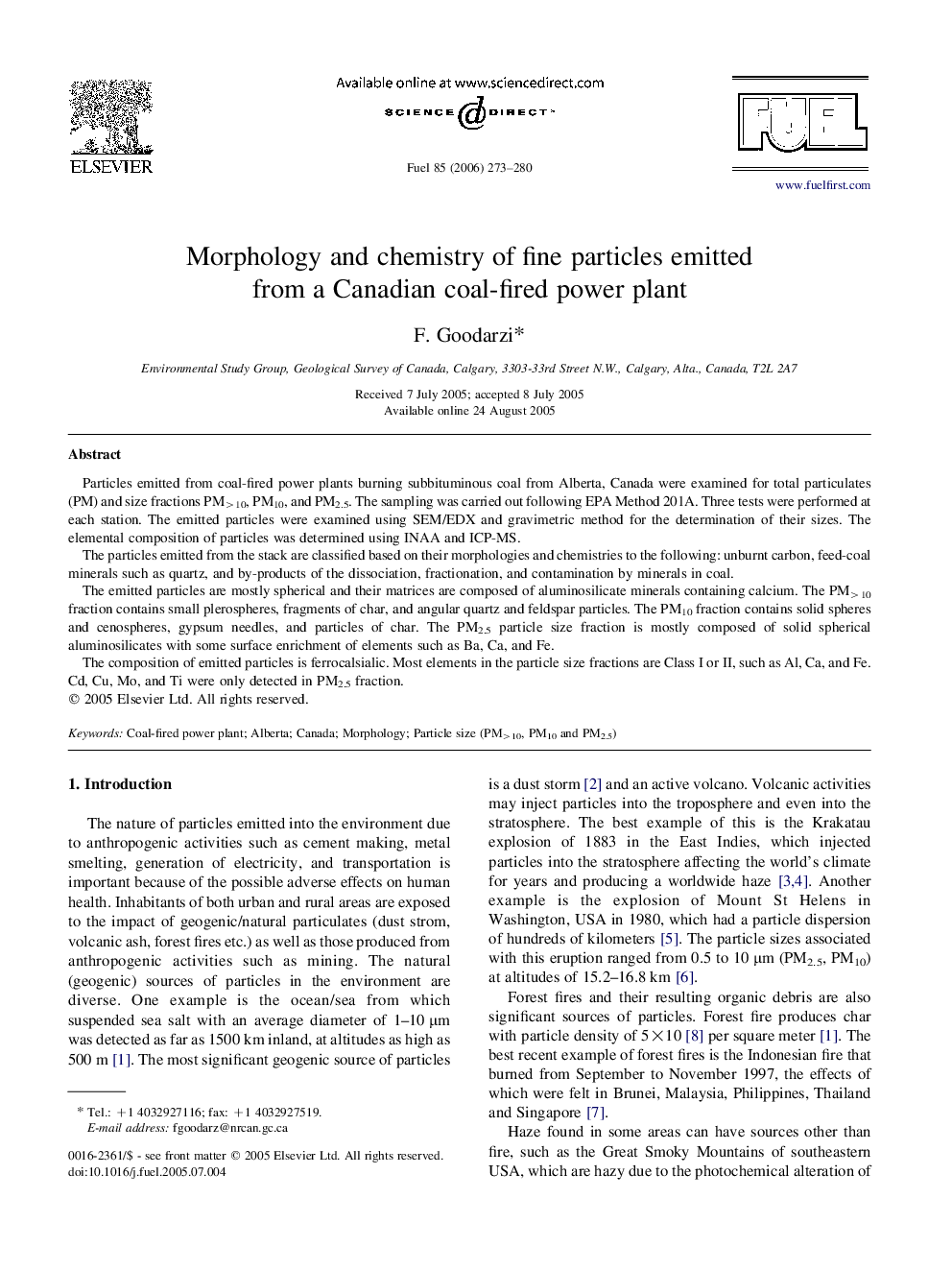| Article ID | Journal | Published Year | Pages | File Type |
|---|---|---|---|---|
| 208123 | Fuel | 2006 | 8 Pages |
Particles emitted from coal-fired power plants burning subbituminous coal from Alberta, Canada were examined for total particulates (PM) and size fractions PM>10, PM10, and PM2.5. The sampling was carried out following EPA Method 201A. Three tests were performed at each station. The emitted particles were examined using SEM/EDX and gravimetric method for the determination of their sizes. The elemental composition of particles was determined using INAA and ICP-MS.The particles emitted from the stack are classified based on their morphologies and chemistries to the following: unburnt carbon, feed-coal minerals such as quartz, and by-products of the dissociation, fractionation, and contamination by minerals in coal.The emitted particles are mostly spherical and their matrices are composed of aluminosilicate minerals containing calcium. The PM>10 fraction contains small plerospheres, fragments of char, and angular quartz and feldspar particles. The PM10 fraction contains solid spheres and cenospheres, gypsum needles, and particles of char. The PM2.5 particle size fraction is mostly composed of solid spherical aluminosilicates with some surface enrichment of elements such as Ba, Ca, and Fe.The composition of emitted particles is ferrocalsialic. Most elements in the particle size fractions are Class I or II, such as Al, Ca, and Fe. Cd, Cu, Mo, and Ti were only detected in PM2.5 fraction.
